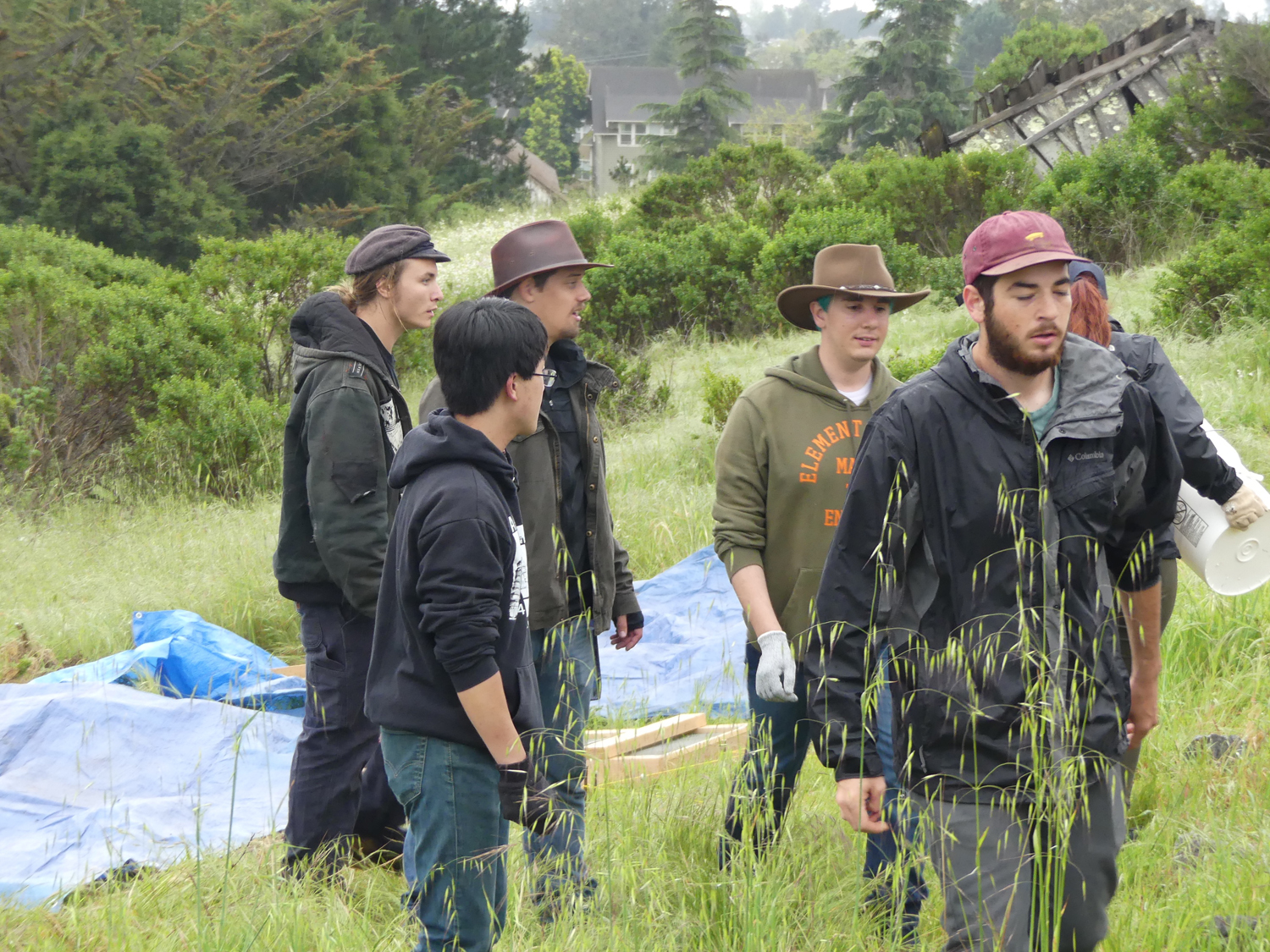UCSC Students Return to Excavations
Benjamin Akey, Anthropology Major
Most archaeological field schools occur during the summer, are expensive, and don’t qualify for federal student aid. The Archaeology Field Course takes place during the academic year, and enrollment is covered by regular student fees and tuition.
Another academic year at UC Santa Cruz means another year of excavations at the Cowell Lime Works Historic District on the UCSC Campus. A group of fifteen anthropology students, led by Adjunct Instructor, Patricia Paramoure, local archaeologist, and assisted by TA, David Ingleman, UCSC Ph.D. student, were given the opportunity to expand their skill sets with a class focused on the introduction to archaeological fieldwork. The class convened Friday evenings for lecture and lab work, and all day Saturdays, for archaeological excavations. Efforts over the ten weeks of Spring Quarter 2016 renewed investigations at the site of Cabin H, a lime workers’ cabin, formerly one of a row of buildings on the hill west of Coolidge Drive, behind the Kilns and Cooperage, near the main entrance to the UCSC Campus. Students became familiar with the fundamental skills of archaeological excavation techniques along with methods of artifact cleaning, sorting, and identification, focusing on establishing a solid background in historical archaeology. Special attention was paid to training students in the skills necessary for success in the field of professional Cultural Resources Management archaeology.

While learning about the historical context of the Cowell Lime Works, the Santa Cruz lime industry at large, and their influences on the development of local landscapes and social networks, students excavated, screened, and recovered artifacts from over 200 ft3 of soil. Back in the lab, these artifacts were cleaned, sorted, and bagged according to provenience. Future cataloging and analysis will add to a growing body of research that will provide further insight into the people and operations at the lime works. Specifically, this excavation adds to the investigation of the domestic lives of workers in Cowell’s employment, who lived in on-site residences, continuing the trend of other recent excavations at Cabin B and Cabin J, and last year’s initial work at Cabin H.
Students were also given the opportunity to further their own interests within the overall topic of the lime works through the development of written reports (modeled on CRM reports) that investigated specific components of the historic district, and recommended potential avenues for future research, including the review of existing collections and suggestions for future excavations. This year, reports include studies of environment and landscape changes connected to the lime works, the use of alcohol and social drugs by employees, religion among the workers, and animal husbandry at the ranch. These reports gave students the chance to connect archaeological methods and historical materials with larger questions about the nature of past communities and industries in the Santa Cruz area, while emphasizing the skills necessary in the preparation and writing of CRM-style technical reports.

On a personal level, this experience allowed me to hone and expand skills necessary for employment and success in the field of archaeology, under the supervision of experienced, helpful and friendly mentors. Casual talks over lunch breaks with Patricia and David helped me understand both the positives and negatives of what to expect going forward in the field of CRM, and conversations with newly interested students helped me to conceptualize what it was that I found so rewarding about the work. This opportunity also meant the creation of new personal connections and friendships across the small but tight group of participants, reaffirming my suspicion that there’s no better way to get to know someone than when breaking a sweat digging holes together. While I had been set on pursuing archaeology before this quarter, watching a group of students, mostly fresh to fieldwork, discover their own interest in the discipline was particularly rewarding. There are not many classes or opportunities that would make me, or many other college students, give up Friday nights and Saturdays for a whole quarter, but I have no doubt that this experience was well worth every day and I will look back on it as one of my favorite classes at UC Santa Cruz.
